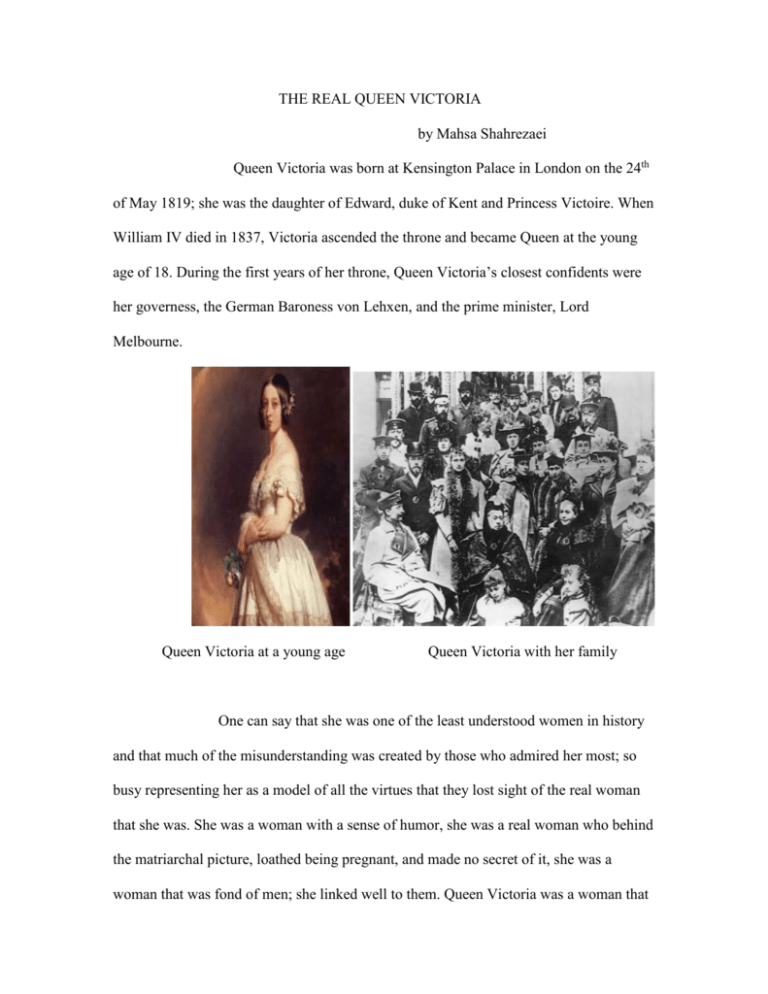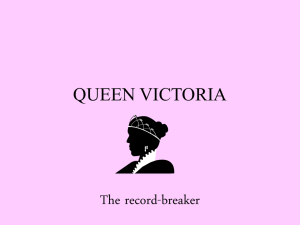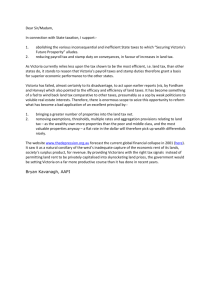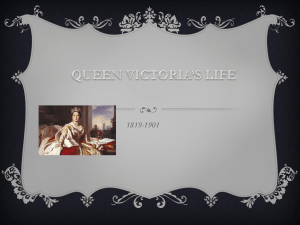
THE REAL QUEEN VICTORIA
by Mahsa Shahrezaei
Queen Victoria was born at Kensington Palace in London on the 24th
of May 1819; she was the daughter of Edward, duke of Kent and Princess Victoire. When
William IV died in 1837, Victoria ascended the throne and became Queen at the young
age of 18. During the first years of her throne, Queen Victoria’s closest confidents were
her governess, the German Baroness von Lehxen, and the prime minister, Lord
Melbourne.
Queen Victoria at a young age
Queen Victoria with her family
One can say that she was one of the least understood women in history
and that much of the misunderstanding was created by those who admired her most; so
busy representing her as a model of all the virtues that they lost sight of the real woman
that she was. She was a woman with a sense of humor, she was a real woman who behind
the matriarchal picture, loathed being pregnant, and made no secret of it, she was a
woman that was fond of men; she linked well to them. Queen Victoria was a woman that
was well ahead of her time.
She got married to her cousin Prince Albert of Saxe-Cobourg in 1839.
Despite Victoria’s dislike of being pregnant and her fear of childbirth, she endured the
process nine times and produced four sons and five daughters; representing the typical
Victorian family that she much cared for. Over the marriages of her children, Victoria
showed un-Victorian and un-royal compassion; she allowed them the freedom of choice
on choosing their mates but strongly disapproved of princesses marrying too young.
Under Queen Victoria and Prince Albert the royal family became moral, and
set an example which was fallowed in society as well as among the middle classes. They
both strongly disapproved of any sexual misconduct. Prince Albert had strong influence
on Queen Victoria’s political views and social problems, despite the different influence
that she had gotten by Melbourne. Queen Vitoria and her husband believed that they
should do whatever is in their power to help European families. Queen Victoria had more
of a conservative view rather than liberal. Victoria’s monarchy was more symbolic than
anything else; she placed great importance on family values and morality. Victoria
fashioned a new image for Britain, she introduced the idea of family monarchy. She even
earned herself the nickname of “grandmother of Europe” due to her great affection and
caring for the royal European families.
During the reign of Queen Victoria, Britain changed from rural society to an
urban society. Quite a few positive events happened during her period. She brought great
changes; many political and social reforms occurred. She focused on human rights,
giving more people the right to vote, saving the poor and she also set laws on children’s
rights on labor and set strict laws on education, making it mandatory for all children to
get a proper education.
In 1861, Victoria’s beloved husband died due to a heavy cold. Queen
Victoria showed more then true love for her husband. She was depressed by her
husband’s death. It was accepted at the time that widows should display their grief and
show signs of mourning in a way that would seem moody today; but the Queen’s reaction
seemed extreme even by the standards of that age. She withdrew into complete seclusion
of Britain for about 10 years.
Victoria died after a short illness on the 22nd of January, 1901 at the age of
eighty-one. Her death caused anxiety among all her subjects, as no one under the age of
seventy could remember living under another monarch.
The Queen Victoria had such a great effect on the 19th century that it has
even been named after her. She has many places around the world named after her, such
as two Australian states, the capitals of British Columbia, the capital of Seychelles and
much more. We Canadians even have a statutory holiday called ‘Victoria Day’ to
celebrate her honour.








